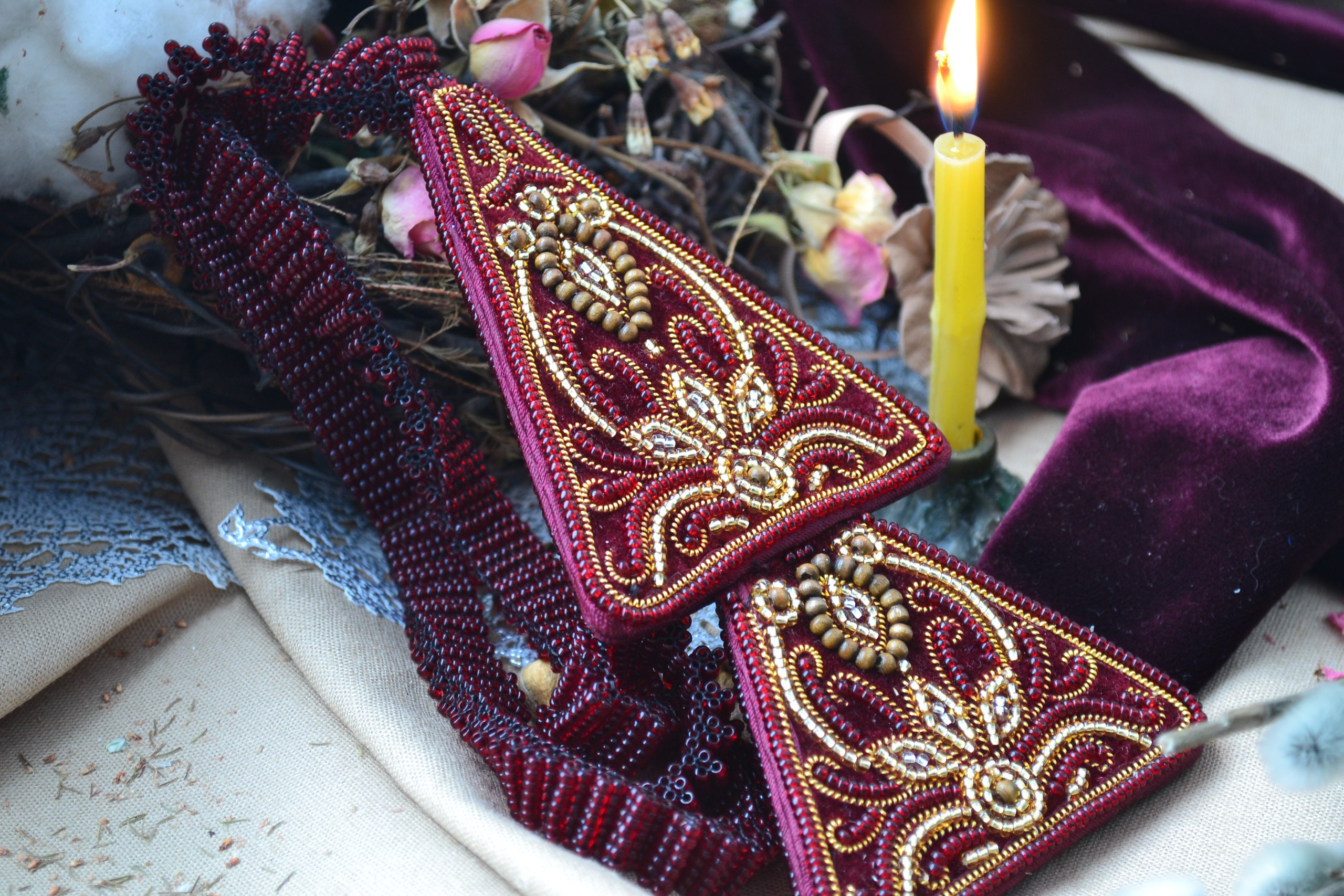
A lestovka is a prayer band — a kind of rosary or vervitsa used throughout Russia in whilom times. A similar instrument existed in the days of Basil the Great. Today, the lestovka is widely used on a daily basis by old-believers. It is a plaited leather band (sometimes made of cloth) sewn into a loop. It signifies both a ladder (lestvitsa) to Heaven and the unceasing prayer of man; it facilitates the counting of prayers and bows, allowing one to concentrate on prayer.
Apart from the usual 109-step lestovka, one may come across a lestovka of 150 rungs. Such 150-step lestovkas are called, virgin-mother lestovkas. They are of later origin, made to imitate a catholic rosary; old-believers rarely use such prayer beads. The manufacture and art of decorating lestovkas had always been a popular trade among them, and lestovkas made in monasteries are preferred.
The symbolism and structure of the lestovka
The structure of a lestovka suits the practical needs of worship, but it also has a symbolic meaning. A lestovka features 100 ordinary steps, called, bobochki. In addition, there are three steps in the beginning, three in the end, and three “great steps,” of a larger size, in the middle. These nine represent the nine orders angels. The beginning and end of the lestovka is smooth. These areas denote heaven and earth. The great steps divide the lestovka into four unequal parts. The 12 steps that divide “the earth” from the first great step represent the 12 apostles. The 40 steps separating the first great step from the second represent the 40-day fast of Jesus Christ. (These 40, or, alternately, 38, also represent the 38 weeks or so that Jesus was borne in His Mother’s womb.) From the second great step to the third there are 33 ordinary steps; these signify the 33 years of the earthly life of Christ. From the third great step to the end there are 17 smaller steps, representing 17 old-testament prophecies regarding Jesus Christ.
The ends of the lestovka are joined by two triangular leafs, called, lapostki; these are often richly decorated with beads, pearls and embroidery. The four points of the lapostki stand for the four evangelists, while the four outer sides represent the evangelical teaching or didascalia. The triangular shape is also symbolic — a reference to the trinity. Underneath the lapostki you will find seven tiny movable rectangular beads strung together; these stand for the seven church sacraments. They also denote the seven completed rounds of the lestovka that a Christian need perform in a day. Yet this symbolism is largely nominal. The triangular lapostki are stitched together so tightly that it is difficult to reach these seven beads. The small steps contain a rolled up “scroll” inscribed with the Jesus Prayer (Lord Jesus Christ, Son of God, have mercy on me, a sinner.)
Christians who do not read, due to poor vision, or for some other reason, find the lestovka a helpful tool in prayer. People must use it in church, it is also useful while traveling or commuting. There are rules regarding the number of lestovkas (prayer cycles) that correspond to the various services (vespers, matins, preparation for communion & c.)
The lestovka prayer rule for the home
The first and last three steps of the lestovka are to be accompanied by the prayer “Hallelujah, hallelujah, glory to Thee, God” and a prostration. The small steps of the lestovka are to be accompanied by the Jesus Prayer, as above, or, when appealing to a saint, the corresponding prayers are added.
The first, second and third great step are to be accompanied by the prayer “Lord, remember me when you come into your Kingdom” and a prostration. (although, in Slavonic, synonyms for the word, lord, are used in the second and third prayer)
Occasionally, this prayer is to be replaced by Hail Mary, to the end, with a prostration.
The lestovka ends with the prayer “God, have mercy” (thrice); “Glory to the Father, the Son, and the Holy Spirit; now, ever and unto all ages. Amen;”
Then begin the next one.
The article was translated, with omissions, from rpsc.ru
by Barabanova Lyubov Yuryevna and Alexey Logvinenko for nashavera.com.
 Discussion
(0)
Discussion
(0)






 Congratulations! You have registered!
Congratulations! You have registered!